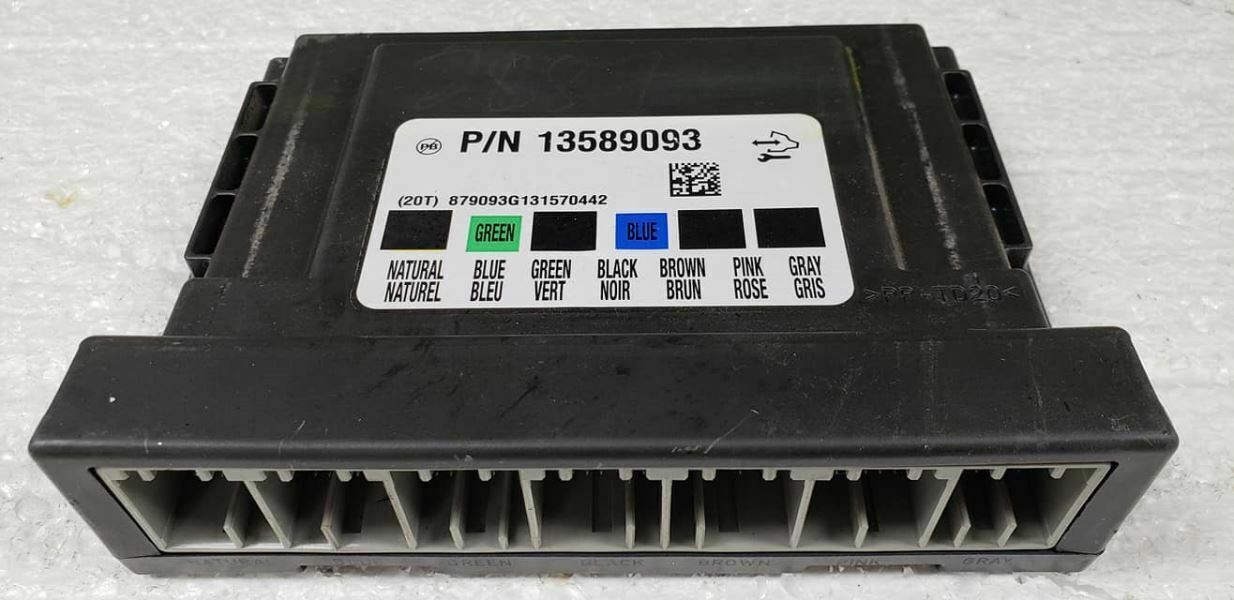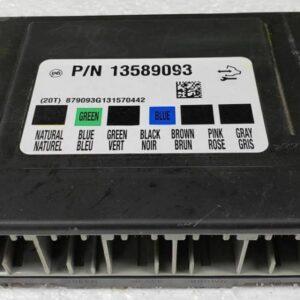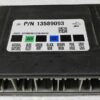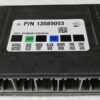Restore Full Electrical Function to Your Vehicle
Is your car acting possessed? Flickering lights, power windows with a mind of their own, or a security system that won’t cooperate are classic signs of a failing Body Control Module (BCM). The BCM is the central command for your vehicle’s body electronics, and when it fails, it can cause a cascade of frustrating and unpredictable problems. This isn’t just an annoyance; it can impact vehicle safety and security. For your 2012 Volt, a faulty BCM can be a real headache, but we have a straightforward, reliable solution.
This listing is for a replacement Body Control Module, part number 13580696, that comes ready for installation thanks to our professional cloning service. Forget about expensive dealership visits, towing fees, and complex programming procedures. Our process is simple: you send us your original BCM, we transfer all the critical vehicle-specific data to this replacement unit, and we ship it right back to you. This ensures a seamless integration with your car’s existing systems.
A Technician’s Notebook: The Case of the Erratic Equinox
A customer brought in a 2012 Equinox a few months back with a laundry list of bizarre issues. The radio would turn on and off, the dome light would stay on, and sometimes the power locks wouldn’t respond. They had already replaced the battery, but the gremlins persisted. After running diagnostics, we found several communication error codes (U-codes) pointing to the BCM. Instead of a costly new module and hours of programming at the dealer, we used our cloning service. The customer mailed in their faulty BCM, we cloned it, and sent the replacement back. They installed it in under an hour, and every single electrical issue was resolved. It’s a perfect example of how this service saves time, money, and immense frustration.
Common Symptoms of a Failing GM BCM
If you’re experiencing any of the following, a failing BCM is the likely culprit. I’ve seen these countless times in my 20+ years in the shop. A faulty 2012 Volt BCM can manifest in many ways:
- ✔ Erratic or non-functional power windows, door locks, and mirrors.
- ✔ Interior or exterior lights that won’t turn on or off.
- ✔ Malfunctioning windshield wipers or horn.
- ✔ The security or anti-theft system acting up, potentially causing a no-start condition.
- ✔ False warnings on the dashboard instrument cluster.
- ✔ Diagnostic trouble codes (DTCs) related to communication errors, such as U0140, U0155, or other U-series codes.
Your Straightforward BCM Installation Guide
Our cloning service handles the difficult part, making the physical swap much easier. While the BCM location varies by model (see fitment list), the general process is similar.
- Safety First: Always disconnect the negative terminal from your vehicle’s battery before starting any electrical work.
- Locate the BCM: On a 2012 Volt, the BCM is located in the right-hand (passenger side) of the engine compartment. For other models, refer to our fitment list or your service manual.
- Disconnect and Remove: Carefully unplug the electrical connectors from the old BCM. They have locking tabs that need to be depressed. Once disconnected, unbolt or unclip the module from its mounting bracket.
- Install the New Module: Mount your new, pre-programmed BCM in the same location. Securely plug in all the electrical connectors, ensuring they click into place.
- Reconnect Power: Reconnect the negative battery terminal.
- Perform Post-Install Checks: Start the vehicle and test all body functions—windows, locks, lights, wipers, etc. Note the important post-installation procedures below.
Important Information After Installation
While our programming service makes this a near plug-and-play repair, some vehicle systems may require a final handshake to recognize the new module. Please be aware of the following potential procedures:
- Airbag System Sync: If the airbag warning light is illuminated after installation, a procedure called ‘Setup SDM Primary Key in BCM’ is needed. This requires a professional-grade scan tool to sync the airbag system with the new BCM and clear the light.
- Brake Pedal Position Relearn: On some models, a brake pedal position sensor recalibration may be required to ensure your brake lights and traction control system function correctly.
Disclaimer: Specific procedures can vary by vehicle. Always consult a factory service manual or a qualified technician for guidance.
Verified Vehicle Compatibility List
This BCM is a direct replacement for part number 13580696 and is also compatible with part numbers 123589093, 13588446, 13584692, and 13583542. It will fit the following vehicles:
- Buick LaCrosse: 2012 (ID 13580696), 2013 – (LH kick panel)
- Buick Regal: 2012 – (LH dash)
- Buick Verano: 2012 – (below center of dash)
- Cadillac SRX: 2012 – (LH dash, ID 13580696)
- Chevrolet Camaro: 2012-2013, 2014 (Coupe) – (RH dash)
- Chevrolet Equinox: 2012 – (LH side dash)
- Chevrolet Spark: 2013 – (left lower a-pillar)
- Chevrolet Volt: 2012 – (RH engine compartment)
- GMC Terrain: 2012 – (LH side dash)
How does the cloning service work?
After you purchase, we will contact you with instructions to ship your original BCM to us. Once we receive it, we extract the unique data and transfer it to the replacement module. We then ship the programmed module back to you, typically within 1-2 business days. This process ensures 100% compatibility.
Do I need to send my original BCM?
Yes. This service requires your original module to perform the data cloning. This is what allows the replacement part to be plug-and-play, saving you from expensive dealer programming.
Is there a core charge?
No, there is no core charge for this item. You can keep your original, non-functional module after you send it to us for the cloning service.
Will this fix my specific problem?
This module corrects issues directly caused by a faulty BCM, such as problems with lights, locks, windows, and security systems. If your vehicle’s issues match the symptoms listed, this is very likely the solution you need. Proper diagnosis is always recommended.
What tools are needed for installation?
Typically, only basic hand tools like a socket set or screwdriver are needed to access and replace the module. The most important post-installation tool, if required, is a professional diagnostic scanner for procedures like the airbag system sync.



